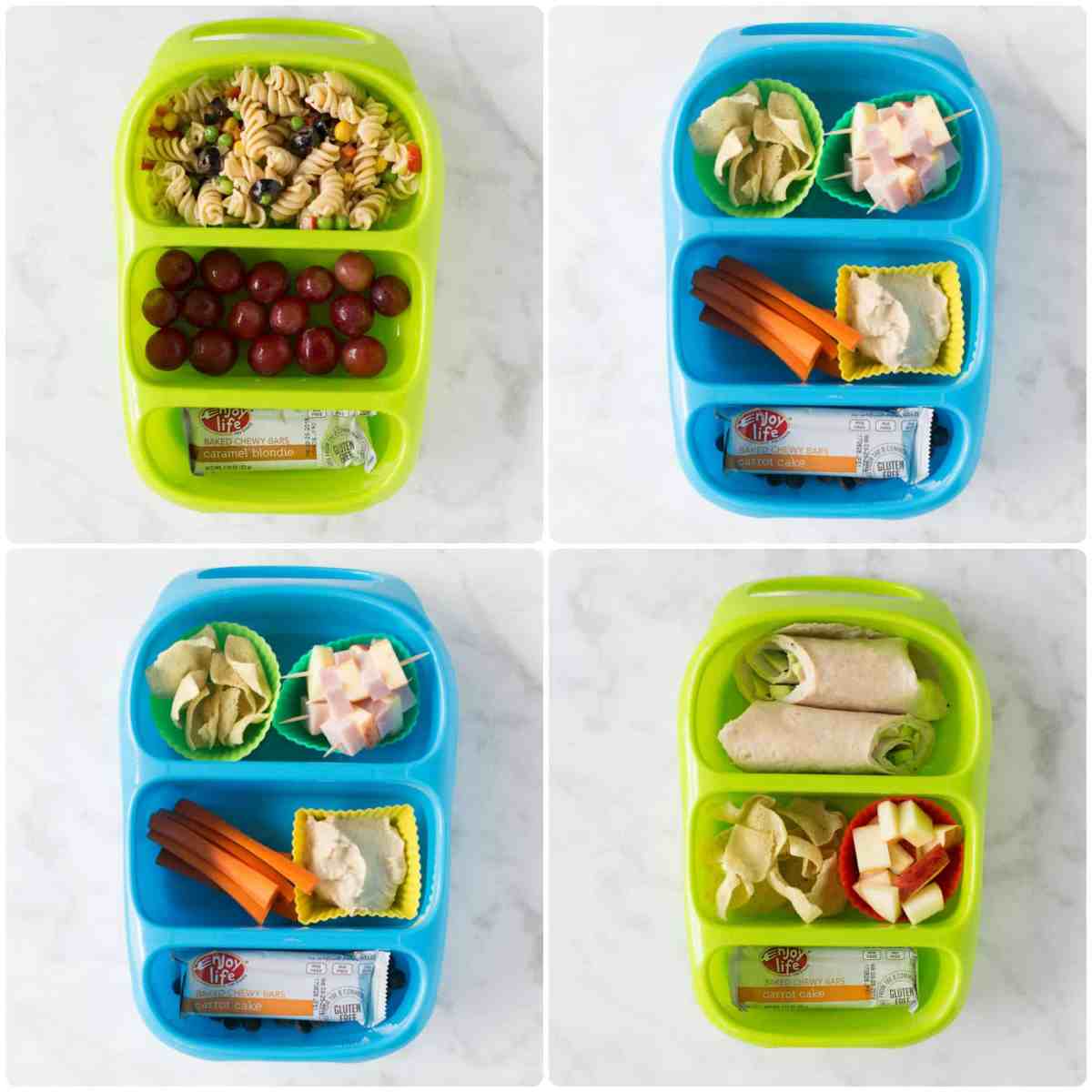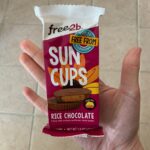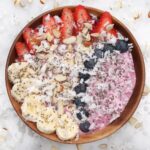Conquer your lunch-time woes with vibrant, allergen-free bowls bursting with flavor and nutrition! This guide unveils a treasure trove of quick and easy recipes designed for busy schedules, offering a delightful escape from the mundane midday meal. Imagine crafting stunning, healthy lunches in minutes, free from common allergens, without sacrificing taste or visual appeal. Prepare to discover a world of culinary creativity that caters to both your dietary needs and your time constraints.
We’ll explore five unique recipes, each brimming with fresh ingredients and bursting with color. Learn valuable time-saving techniques like batch cooking and smart ingredient preparation, transforming your weekly meal planning into a breeze. We’ll also cover ingredient substitutions to accommodate various dietary preferences, ensuring there’s a perfect bowl for everyone. From clever plating suggestions to the best containers for transporting your creations, this guide is your ultimate resource for delicious, allergen-free lunch bowls that are as easy on the eyes as they are on the stomach.
Recipe Ideas
Creating delicious and nutritious allergen-free lunch bowls doesn’t have to be time-consuming. These recipes are designed for busy individuals who want healthy, satisfying meals without compromising on taste or spending hours in the kitchen. Each recipe is carefully crafted to be free from common allergens like gluten, dairy, soy, and nuts, while still delivering a vibrant array of flavors and textures.
Five Allergen-Free Lunch Bowl Recipes
The following table presents five unique allergen-free lunch bowl recipes, emphasizing speed and simplicity. Each recipe provides a balanced combination of protein, carbohydrates, and healthy fats, making them perfect for a quick and satisfying lunch. Nutritional information is approximate and can vary based on specific ingredients used.
| Recipe Name | Main Ingredients | Preparation Time | Description |
|---|---|---|---|
| Mediterranean Quinoa Bowl | Quinoa, cucumber, tomatoes, olives, feta cheese substitute (e.g., Violife), lemon-herb dressing | 15 minutes | A refreshing and flavorful bowl packed with Mediterranean goodness. The feta substitute adds a creamy texture without dairy. |
| Spicy Shrimp & Avocado Bowl | Shrimp, avocado, brown rice, black beans, corn, lime juice, chili powder | 20 minutes | A zesty and vibrant bowl with a kick. The shrimp provides lean protein, while the avocado adds healthy fats and creaminess. |
| Chicken & Sweet Potato Bowl | Chicken breast (grilled or roasted), sweet potato (roasted or microwaved), broccoli florets (steamed or microwaved), maple-mustard dressing | 25 minutes | A comforting and satisfying bowl with a touch of sweetness. The sweet potato provides complex carbohydrates, while the chicken offers lean protein. |
| Lentil & Vegetable Bowl | Red lentils (cooked), carrots (diced), zucchini (diced), bell peppers (diced), cumin, coriander, lemon juice | 20 minutes | A hearty and flavorful vegetarian bowl packed with protein and fiber. The lentils provide sustained energy, while the vegetables add vitamins and minerals. |
| Salmon & Asparagus Bowl | Salmon fillet (baked or pan-fried), asparagus (roasted or steamed), wild rice, dill, lemon wedges | 25 minutes | A sophisticated and elegant bowl perfect for a quick yet impressive lunch. The salmon provides omega-3 fatty acids, while the asparagus adds a delicate flavor. |
Step-by-Step Preparation: Spicy Shrimp & Avocado Bowl
This recipe details the preparation of the Spicy Shrimp & Avocado Bowl. Visual descriptions are provided to enhance understanding.
- Cook the rice: Imagine a pot of bubbling water, the grains of brown rice gently softening. [Image description: A pot on a stovetop with boiling water and brown rice cooking.] Rinse 1 cup of brown rice and cook according to package directions.
- Prepare the shrimp: Picture succulent shrimp, quickly sautéed until pink and slightly crispy. [Image description: A pan with sizzling shrimp, turning pink and slightly browned.] Sauté 1/2 pound of shrimp with a little olive oil and chili powder until cooked through.
- Chop the vegetables: Envision vibrant colors – ripe avocado, dark black beans, and bright yellow corn. [Image description: A cutting board with neatly chopped avocado, black beans, and corn.] Dice 1 avocado, and prepare 1/2 cup of black beans and 1/2 cup of corn.
- Assemble the bowl: Visualize a beautiful arrangement of colors and textures in a bowl. [Image description: A bowl filled with brown rice, shrimp, avocado, black beans, and corn, garnished with a lime wedge.] Layer the cooked rice, shrimp, avocado, black beans, and corn in a bowl.
- Add the finishing touch: Imagine a squeeze of fresh lime juice, enhancing the flavors. [Image description: A lime wedge being squeezed over the finished bowl.] Squeeze fresh lime juice over the bowl and sprinkle with extra chili powder, if desired.
Ingredient Substitutions & Adaptations

Creating allergen-free and adaptable lunch bowls requires careful consideration of ingredient substitutions. Many common allergens, such as gluten, dairy, soy, nuts, and eggs, can be easily replaced with suitable alternatives to maintain both flavor and nutritional value. This section details common substitutions and provides alternative recipes catering to various dietary needs.
Common Allergen Substitutions
Numerous ingredients can be swapped to create allergen-free meals. For example, gluten-free bread or rice can replace wheat-based bread in a grain bowl. Dairy-free milk alternatives, such as almond, soy (if soy isn’t an allergen), oat, or coconut milk, are suitable replacements for creamy sauces or dressings. Individuals with nut allergies should opt for sunflower seed butter instead of peanut butter, and consider tahini or pumpkin seeds as alternatives for added crunch. Egg replacements, like flax eggs (1 tablespoon ground flaxseed meal mixed with 3 tablespoons water) or applesauce, can be used in binding recipes. Soy sauce can be substituted with tamari (gluten-free soy sauce) or coconut aminos for those avoiding soy.
Alternative Recipes for Dietary Restrictions
We’ll modify one base recipe (assume a base recipe of quinoa, roasted vegetables, chickpeas, and a lemon-tahini dressing) to illustrate adaptations for different dietary needs.
Vegan Adaptation
The base recipe is already largely vegan, assuming the tahini dressing doesn’t contain honey. To ensure complete veganism, verify all ingredients are plant-based and avoid any hidden animal products. For enhanced flavor and protein, consider adding toasted pumpkin seeds or hemp seeds for added texture and nutritional value. The vibrant orange hue of the roasted vegetables, perhaps sweet potatoes and carrots, combined with the creamy white tahini dressing and the earthy quinoa, creates a visually appealing and nutritionally balanced bowl.
Vegetarian Adaptation
This adaptation focuses on enhancing the vegetarian aspects of the base recipe. We could incorporate a variety of colorful vegetables like bell peppers (red, yellow, and orange for visual appeal), zucchini, and cherry tomatoes. Adding crumbled feta cheese (if dairy is not a restriction) would provide a salty, tangy contrast to the other flavors. The resulting bowl is a vibrant mix of textures and tastes, with the soft quinoa contrasting against the firmer vegetables and the creamy feta.
Paleo Adaptation
For a paleo adaptation, replace quinoa with cauliflower rice. This provides a similar texture to quinoa while remaining grain-free and paleo-compliant. The roasted vegetables remain, but we’ll remove the chickpeas as legumes are not part of the paleo diet. Instead, add shredded chicken or other paleo-friendly protein. For the dressing, replace the tahini with a simple olive oil and lemon juice vinaigrette. This version prioritizes clean, whole foods, resulting in a lighter and brighter bowl compared to the original recipe. The cauliflower rice provides a subtle, slightly sweet background to the savory roasted vegetables and the light, zesty dressing.
Adjusting Portion Sizes and Ingredients
Portion sizes and ingredients can be easily adjusted to meet individual needs and preferences. For smaller portions, simply reduce the quantity of each ingredient proportionally. Individuals requiring more protein can add extra chickpeas, grilled chicken, tofu, or lentils. Those needing more fiber can add more vegetables or whole grains. Spice levels can be adjusted by adding more or less chili flakes or hot sauce. Creative substitutions are key; for example, different types of vegetables can be used to change both the color and nutritional profile of the bowl, making it visually appealing and nutritionally tailored to individual needs. A visually appealing bowl might include deep green kale, bright orange sweet potatoes, and vibrant red bell peppers, creating a rainbow effect.
Creating delicious and allergen-free lunch bowls doesn’t have to be a daunting task. With a little planning and these simple recipes, you can transform your midday meal into a vibrant, healthy, and satisfying experience, even on the busiest of days. The key is embracing efficient meal prep strategies, utilizing versatile ingredients, and unleashing your inner culinary artist with creative plating techniques. So, ditch the boring sandwiches and embrace the colorful, flavorful world of allergen-free lunch bowls – your taste buds (and your schedule) will thank you!
FAQ Section
Can I freeze these lunch bowls?
Yes, many of these bowls freeze well. However, consider freezing components separately (e.g., grains, proteins, vegetables) and assembling just before serving to maintain optimal texture and freshness.
What if I don’t have all the ingredients listed?
Feel free to substitute ingredients based on your preferences and availability. The guide provides suggestions for common substitutions.
How long can I store the prepared bowls in the refrigerator?
Most prepared bowls will last 3-4 days in the refrigerator. Always ensure proper refrigeration to maintain food safety.
Are these recipes suitable for children?
Yes, many of these recipes are adaptable for children. Simply adjust portion sizes and consider omitting spicier ingredients if necessary.


